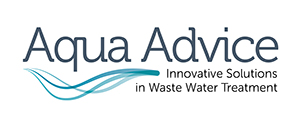Molybdenum and UK wastewater legislation

Molybdenum is used in a number industries across the UK and its levels in wastewater must be controlled to minimise environmental and health risks.
Read on to find out more.
What is molybdenum?
Molybdenum is a naturally occurring metal and an essential trace mineral found in rocks, soil, plants, animals, and microorganisms.
It plays a critical role in human health, aiding in waste removal, detoxifying sulphites, and preventing uric acid buildup.
Molybdenum is also present in foods such as milk, cheese, grains, nuts, leafy vegetables, and organ meats.
While it is essential in trace amounts, excessive exposure can be harmful. High doses may lead to elevated uric acid levels, potentially resulting in gout-like symptoms.
How is molybdenum used in UK industry?
Molybdenum is widely used in the production of structural steel, stainless steel, cast iron, and speciality alloys. It is also utilised in electronic components, pigments, and niche applications like metal finishing.
Consequently, it can often be found in the wastewaters generated by these industries.
Controlling molybdenum levels in industrial wastewater is crucial to minimise environmental and health risks.
Molybdenum and UK legislation
In the UK, regulations concerning molybdenum in wastewater are guided by broader wastewater and environmental protection laws.
Key considerations include the discharge of potentially hazardous substances and ensuring compliance with water quality standards:
Water Framework Directive (WFD)
The EU-originated WFD, still influencing UK law post-Brexit, aims to protect and improve water quality. It requires industries to manage substances like molybdenum, which could harm aquatic ecosystems if present in high concentrations.
Environmental Permitting Regulations (EPR)
To discharge treated wastewater, industries must obtain permits from relevant authorities such as the Environment Agency in England, Natural Resources Wales, SEPA in Scotland, or NIEA in Northern Ireland.
Permits often set strict limits on the concentration of metals, including molybdenum, in effluent discharge to prevent water pollution.
Control of Pollution Act 1974
This foundational legislation emphasises the prohibition of unlicensed discharge of polluting materials, including heavy metals, into water bodies.
Industries must treat effluents effectively to meet the stipulated standards for disposal.
General binding rules and specific regulation
Discharge from wastewater systems must comply with binding rules, such as ensuring effluent does not exceed pollution thresholds.
For newer installations or processes, updated regulations might require additional treatment technology to reduce pollutant levels, including trace metals like molybdenum.
UK authorities periodically review water quality objectives and enforce compliance through inspections and penalties for violations.
These frameworks collectively work to safeguard water resources and public health, requiring industries to continually update their wastewater treatment processes to align with current and emerging standards.
How to comply with UK legislation regarding molybdenum
To meet the standards expected, UK industries must adopt efficient removal techniques to ensure discharges remain within permissible levels.
These include:
- Ion exchange
This method exchanges molybdenum ions with other ions of the same charge. Although effective, it is expensive due to high setup and operating costs. Additionally, ion exchange struggles with oily wastewaters, limiting its versatility. - Reverse osmosis
A filtration process that uses a semi-permeable membrane to separate contaminants, including molybdenum, from water. However, the membranes are prone to degradation from high temperatures, pH, and bacterial growth. Frequent replacements add to operational costs. - Distillation systems
By evaporating water into steam, this process leaves molybdenum and other contaminants behind. While it kills bacteria and microbes, distillation does not remove volatile compounds and may corrode plumbing over time.
Aqua Advice and molybdenum removal
After evaluating the limitations of conventional methods, Aqua Advice has developed a groundbreaking molybdenum removal process.
Using novel chemical precipitation technology, this process allows molybdenum to be precipitated at a pH of 6.5, preventing it from re-entering solution.
This efficient, single-stage settlement method reduces molybdenum and heavy metal concentrations to levels well below regulatory requirements.
With over three decades of experience in wastewater treatment, Aqua Advice provides tailored, innovative solutions for removing molybdenum and other contaminants.
Contact us today to discuss how we can help manage your wastewater challenges effectively.
